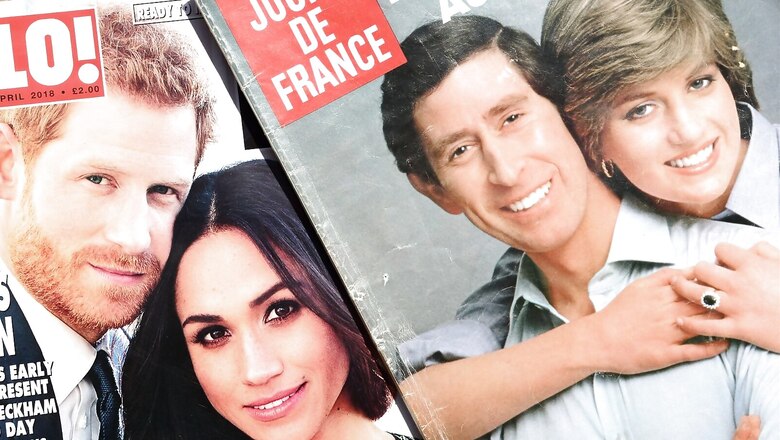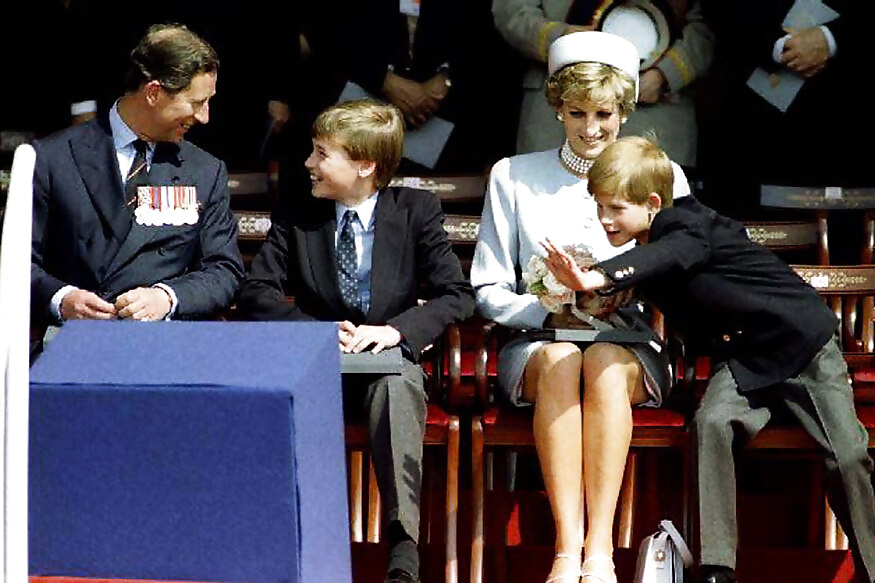
views
“Diana’s dead. Get to Paris.”
This is what Stephen Farrell, then a Times of London reporter, now with The New York Times remembers being told the night of Princess Diana’s death.
“I was asleep at home in London and got a call around 4 or 5 a.m. from a news editor saying: “Diana’s dead. Get to Paris.” Click. I knew all the tabloids and TV would have all the flights booked so I drove off at high speed down the old Roman road to Dover, onto the car train, and at high speed through northern France,” he told the New York Times.
Farrell was among the number of reporters alerted at odd hours after the news of Diana’s car crash and death broke out. It was upsetting, sensational and unbelievable at the same time.
The media’s response to Diana’s death was massive, even drawing Queen Elizabeth II out for a formal statement.
But it was the media’s frenzy around Diana that was blamed for her eventual death.
Recalling the Day
As Christopher Andersen detailed in his book “The Day Diana Died,” Diana’s final day was spent with her boyfriend at the time, 42-year-old Dodi Fayed, a film producer and the son of billionaire Harrod’s owner Mohamed Al Fayed, a report by Today explained.
According to a yacht crewmember’s recollections to WWD, the couple arrived in Paris from Sardinia on August 30, 1997, after spending more than a week together yachting around the Mediterranean. They’d shared a meal that Saturday evening at the Ritz Paris, Fayed’s father’s grand hotel, before departing in the early hours of Sunday morning for Fayed’s Paris flat, according to NBC.

The BBC stated the couple set out in a Mercedes-Benz driven by Henri Paul, the Ritz’s deputy head of security. Trevor Rees-Jones, their bodyguard, accompanied them.
Paul lost control of the car shortly after entering the Pont de L’Alma tunnel, less than two miles from where their journey began. The Associated Press reported that witnesses saw the car speeding.
NBC reports that while attempting to avoid colliding with a white Fiat Uno in the right lane, Paul collided into the tunnel’s 13th pillar, resulting in a devastating collision that killed both Paul and Fayed at the scene.
Reports say the collision could have been caused by a number of factors.
According to Anderson’s book and the BBC, witnesses saw a number of photographers chasing the Mercedes-Benz on motorcycles before the crash, but it’s unclear how much that influenced the driver’s actions.
Blood analysis revealed that the driver, Paul, had a blood alcohol content that exceeded France’s legal limits, according to the Paris public prosecutors’ office.
According to CNN, Diana, Fayed, and Paul were not wearing seat belts.
The Paparazzi’s Role
The paparazzi remained at the scene of the accident after chasing after the car, photographing Diana in her final moments.
“I think one of the hardest things to accept is that the people who chased her into the tunnel were the same people who were photographing her while she was still dying in the back seat of the car,” Diana’s youngest son, Prince Harry, said in the 2017 BBC documentary “Diana, 7 Days.”
“William and I are aware of this. We’ve been told numerous times by people who are aware of the situation.”
Harry emphasised his own belief that the crash was caused by the photographers.
“Rather than helping, those who caused the accident were taking photographs of her dying,” he said in the BBC documentary.
Harry’s Fingers Point to Media
In the recent docuseries Harry and Meghan have released on Netflix, the blame is largely on the media for their decision to uproot themselves as senior royals and start a life abroad.
The couple criticise the media and how it covers their relationship and the royal family. Harry describes being followed by paparazzi as a child, leading up to the death of his mother, Princess Diana, who died in a car crash in 1997 after being pursued by paparazzi in Paris. Harry also expressed concern that media pressure would scare Meghan away, as it had done with previous girlfriends.
Meghan described how meeting Harry turned her life upside down. In Toronto, she was followed by paparazzi, who she claimed were paid by neighbours to position a camera in her backyard.

Harry, who has taken over the U.K. In the past, tabloids to court spoke about the royal rota system, in which different press outlets are given access to cover the royal family, a report by Good Morning America states.
The couple also spoke against the negative press coverage Meghan received, factoring in her ‘race element.’
Princess Diana’s Complicated Relationship With the Press
Ever since Diana’s engagement to Prince Charles was made public, she became a media favourite. Paparazzi crowded her where she worked, even before she was married to the Prince.
Her eventual back and forth with the tabloids, all through their strained marriage to the eventual royal divorce, and her criticisms of the royal stock, followed by her dating life, told the tale of a back and forth but toxic marriage with the media.
The 1981 wedding of Prince Charles and Lady Diana Spencer, a 20-year-old beauty with no past was watched by an estimated 750 million people worldwide. The public was obsessed with the shy kindergarten teacher since reporters discovered she was dating the heir to the throne.
Later, as she battled Charles during their separation and divorce, the media became her weapon of choice, Roxanne Roberts wrote for the Washington Post. When she secretly collaborated with author Andrew Morton on the sensational biography “Diana: Her True Story,” the palace was furious.
Roberts argues that the media attention was spawned also by the public, and Diana herself, hungry over every word that was written and photograph clicked.
According to her, relaxed protocol and more genuine cooperation have greatly improved relations between the palace and the media. Camilla, who was once the story’s villain, has become a favourite of royal reporters due to her down-to-earth demeanour. When Prince William complained that photographers were getting too close to Kate Middleton before their engagement, and when Prince Harry warned them to stop following his girlfriend, actress Meghan Markle, the newspapers backed down. They, like other celebrities, now avoid traditional media in favour of Facebook and Twitter, which gives them more control.
But the story isn’t over, as the media debate completes a full cycle with Harry’s affront against it.
Read all the Latest Explainers here



















Comments
0 comment